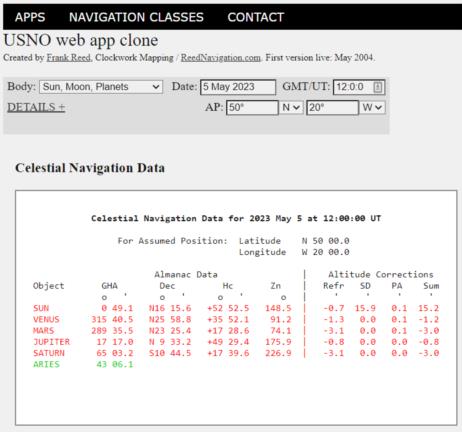
NavList:
A Community Devoted to the Preservation and Practice of Celestial Navigation and Other Methods of Traditional Wayfinding
From: Tibor Miseta
Date: 2023 May 7, 04:47 -0700
Dear Jan,
Your described method sounds feasible, it is definitely worth a try! Seeing Venus daylight at frist time is fascinating. I did not check your guide stars, however I found an error in your R.A. calculation. With modern celnav terms R.A. = (360°-SHA°)/15 = (360°- (GHA°body - GHA°Aries))/15. This calculation gives me 5 hours 49 minutes for R.A. of Venus on 5th May 2023. See the attached picture.
Venus is very bright, bright enough to find it easiliy in daylight if the Sun separation is large enough. You can take an application that calculates Venus's postition on your location (azimuth and altitude), grab your compass and (bubble on land) sextant, and scan the small protion of the sky, you will catch it for sure. (See the Data tab for such applications: GPS Anti Spoof for mobile or the USNO Clone both serves.)
There is a thread on this topic, that is worth to read too, starting with: https://navlist.net/Venus-daylight-FrankReed-mar-2020-g47348







